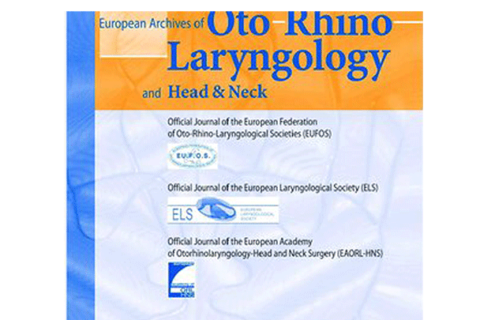
Mechanical and sensorineural vestibular dysfunction: a case study of “mixed” vestibulopathy
Published on: May 27, 2020
 J Otolaryngol ENT Res. 2020;12(3):85‒89.
J Otolaryngol ENT Res. 2020;12(3):85‒89.
Volume 12 Issue 3 – 2020
Joseph T Sakumura, Richard E Gans
The American Institute of Balance, USA
Abstract
A diagnosis of hearing loss typically consists of categorizing the locus of involvement; conductive, sensorineural, retrocochlear, or mixed. It is this designation that provides guidance as to whether medical or a non-medical approach e.g. amplification is the preferred treatment. When a “mixed” loss occurs, a combination of medical and non-medical management strategies will be utilized. When vestibular dysfunction, is discussed, however, we rarely think about this combined causation. A unilateral vestibulopathy dysfunction (UVD) from a vestibular neuritis, may cause either hair cell damage and/or a neuropathy]. This may be considered as a “sensorineural” dysfunction. The literature, and clinical experience, suggests, that an onset of Benign Paroxysmal Positional Vertigo (BPPV) often follows, within days or weeks. BPPV may be considered the “mechanical” component, requiring treatment with Canalith Repositioning. Such patients, therefore, may be considered to have a “mixed” dysfunction. This requires two different treatments in order to successfully extinguish or ameliorate two differing sets of functional impairments. We present a case report of a 52-year-old female patient with complaints of initial acute onset vertigo, positional dizziness, oscillopsia and visual provocation. Attending physician, suspected BPPV and referred her for testing. The evaluation confirmed a left ear BPPV-PC, in addition to a non-compensated left unilateral vestibular dysfunction (UVD). The BPPV was successfully cleared with Canalith Repositioning Maneuvers (CRM) at her first treatment visit. Based on her profile ensuring safety and no fall-risk, she was prescribed an individualized self-directed vestibular rehabilitation therapy home exercise program to address the non-BPPV related symptoms. She returned to The American Institute of Balance (AIB), at one-month, reporting complete amelioration of the movement and visually provoked symptoms. Post-therapy objective testing demonstrated compensation of the previously identified UVD. This case demonstrates, that for many patients presenting with BPPV symptoms, there may also be compounding underlying functional impairments. Without the benefit of a thorough evaluation, the “sensorineural” aspect of the “mixed” vestibular dysfunction, may go unresolved. This will further delay their recovery and return to a normal active lifestyle or employment.